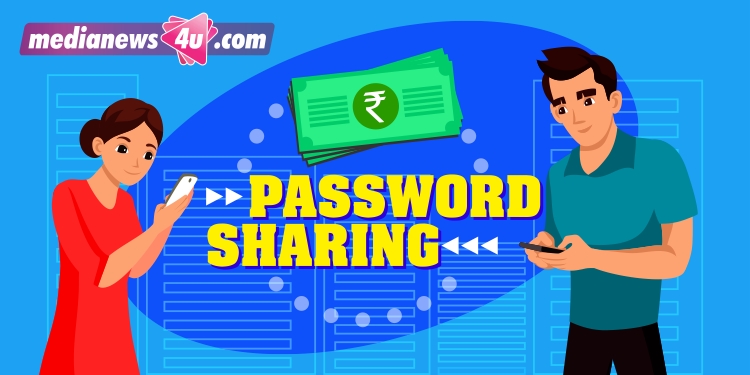OTT platforms have been facing the problem of sharing of passwords, incurring significant revenue losses.
Netflix’s planned crackdown in the coming months will no longer allow password sharing outside a household. It will allow users to access accounts in different households with a new paid sharing feature.
Medianews4u.com checked with few market researchers and analysts, to understand if a paid password sharing feature would work in India.
‘It’s all about pricing’

I believe a paid password sharing will be a dual-edged sword…. Initially it might mean a lot of drop offs or cancel reactions but in the long term the borrowing consumers are bound to be won back by platforms either through great programming, great offers/ pricing strategy or simply through ‘watch the content for less while you watch ads’.
Also if at the end of the day I pay X for an added profile of my mother and my mother has to pay XX for a new subscription, I will choose X. It’s all about pricing in the great Indian consumer mind.
– Divya Dixit, Business Strategy & Growth Consultant.
Subscription plus advertising revenue model the way forward‘

Password sharing has been hurting Netflix and other OTTs a lot and it was high time that they moved into monetising account sharing by making subscribers pay an additional fee for sharing their account with users outside their household. In the short term, it might result in loss of customers but from a long-term perspective it’s a step in the right direction as password sharing is sort of an illegal action and therefore must be handled. All OTTs should do a common industry campaign against password sharing, the way movie industry did against piracy.
From a viewer perspective, we have seen the assumption that Indian users would not pay for content has been proven wrong and hence a balanced subscription plus advertising supported OTT revenue model is the way forward for OTT’s and gradually the viewers will also get used to it.
– Girish Upadhyay, CMO, Axis My India
‘42pc among urban Indians do not mind sharing subscription details’

Data from YouGov Global Profiles, an audience intelligence tool, shows over a third of global respondents (35pc) agree that video and music streaming services should not care if they share their credentials and subscriptions. The number increases to 42pc among urban Indians who do not mind sharing their subscription details as opposed to 24pc who mind doing this.
Considering India is a price-sensitive market, consumers avoid paying for multiple services and choose to borrow passwords. To add to this, subscription fatigue further discourages them from buying multiple subscriptions. In order to address this concern, OTT platforms will have to understand consumption behaviour and offer a solution that positively impacts their earnings without turning away subscribers.
– Deepa Bhatia, General Manager, YouGov India
Innovative way of getting better ARPU’

If you look at Netflix, their user base or subscriber base, they are paying three or four family members using one paid subscriber account. The paid password sharing to another household will work in India because it’s a price sensitive market.
Globally, close to 20 to 25pc of the paid subscribers actually share their account, not only among family members but also externally. This number would be far higher in a country like India. If this kind of thing gets implemented, customers would be happy to pay a little bit of extra premium of 20 to 30pc over the subscription plan price and can openly share it outside the family as well.
This can be some sort of a driver for the SVOD revenue and better monetisation because the pricing is at the rock bottom right now if you compare to other countries and on par with other platforms in the country. Given the premium nature of content they offer, this would be just a way of improvising the SVOD revenue base.
In SVOD, one is the number of subscribers and other is average revenue per user (ARPU) growth. In India ARPU growth is not happening now because the market is highly fragmented and you have platforms like Jio who are offering IPL content free of cost. It is only the subscriber growth which is happening. But even subscriber growth is not possible beyond a point. Prices can’t go further down from here on and revenue can’t increase on an ad rate basis. So this is an innovative way of getting better ARPU.
The market is becoming quite challenging now – the moment they take a price hike the subscriber growth comes down. So in a market like India where you are penetrating deeper, going to Tier 2 and 3 markets which have got a lower paying capacity and TV ARPUs are phenomenally low, ARPUs have become a challenge for OTT platforms.
This is some sort of bundling strategy – not in the form of customer base but bundling of existing customers, wherein they can actually pay some extra premium and extend the benefit of services to other households.
– Karan Taurani, Senior Vice President, Elara Capital

Many local players in India have already adopted this type of model with freemium offerings – free ad supported content, along with some gated subscription only content – essentially catering to every taste and consumer wallet.
– Vijay Anand Kunduri, Regional Vice President – CTV/ OTT (APAC), PubMatic

















